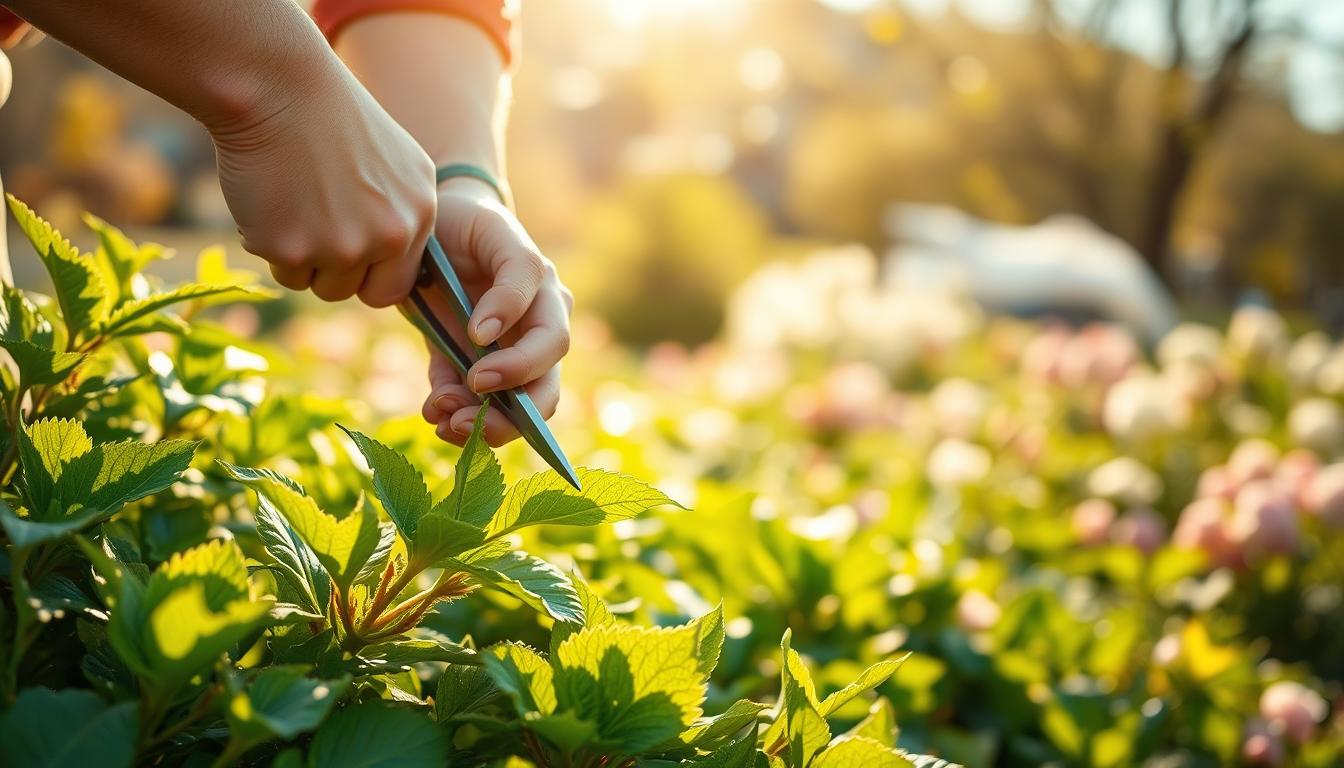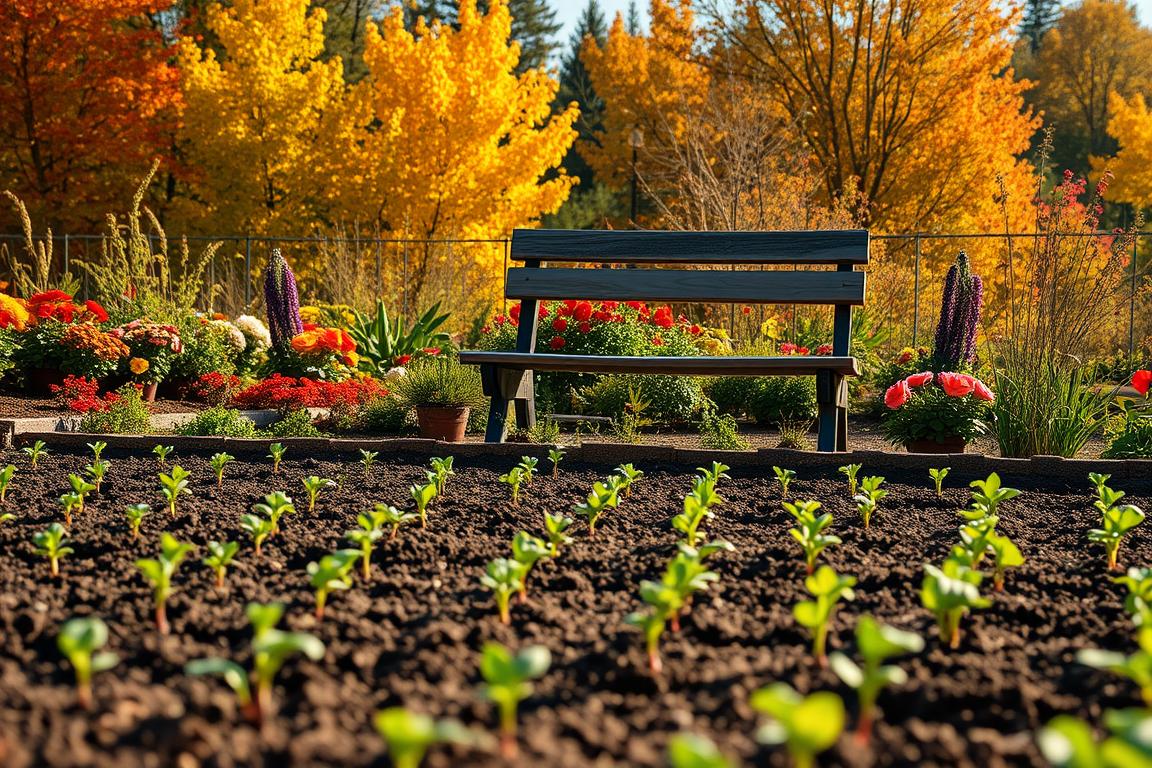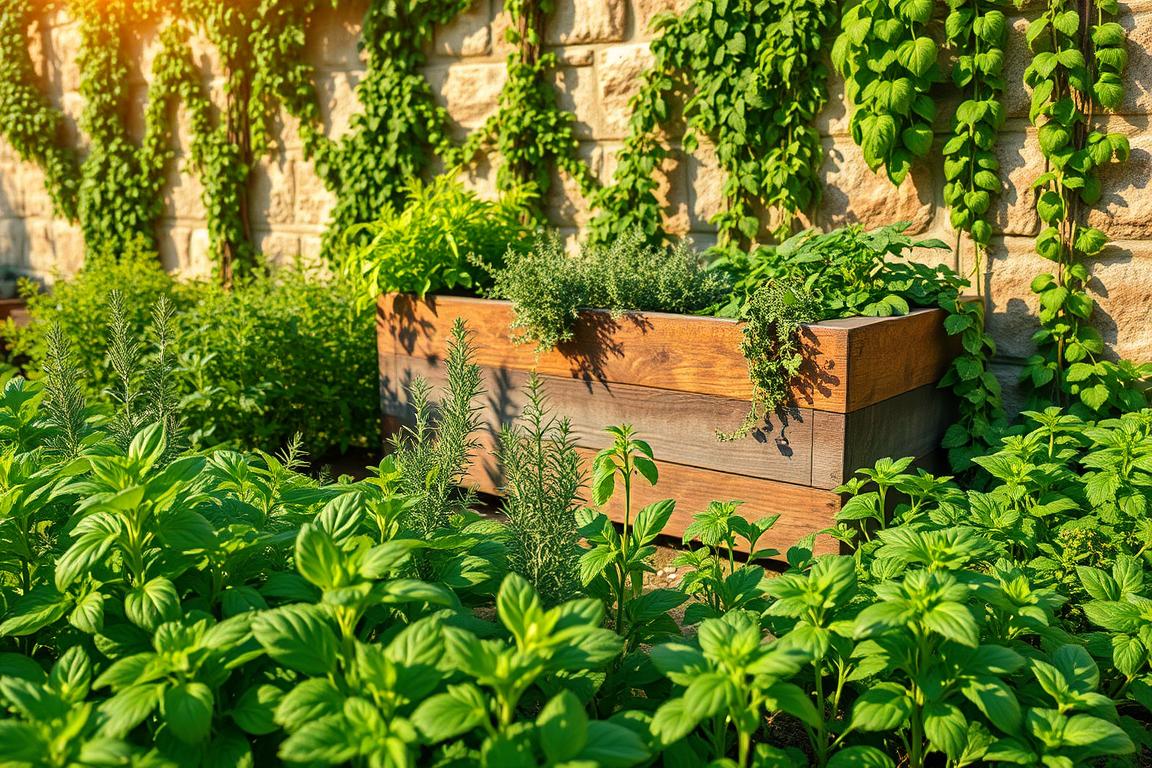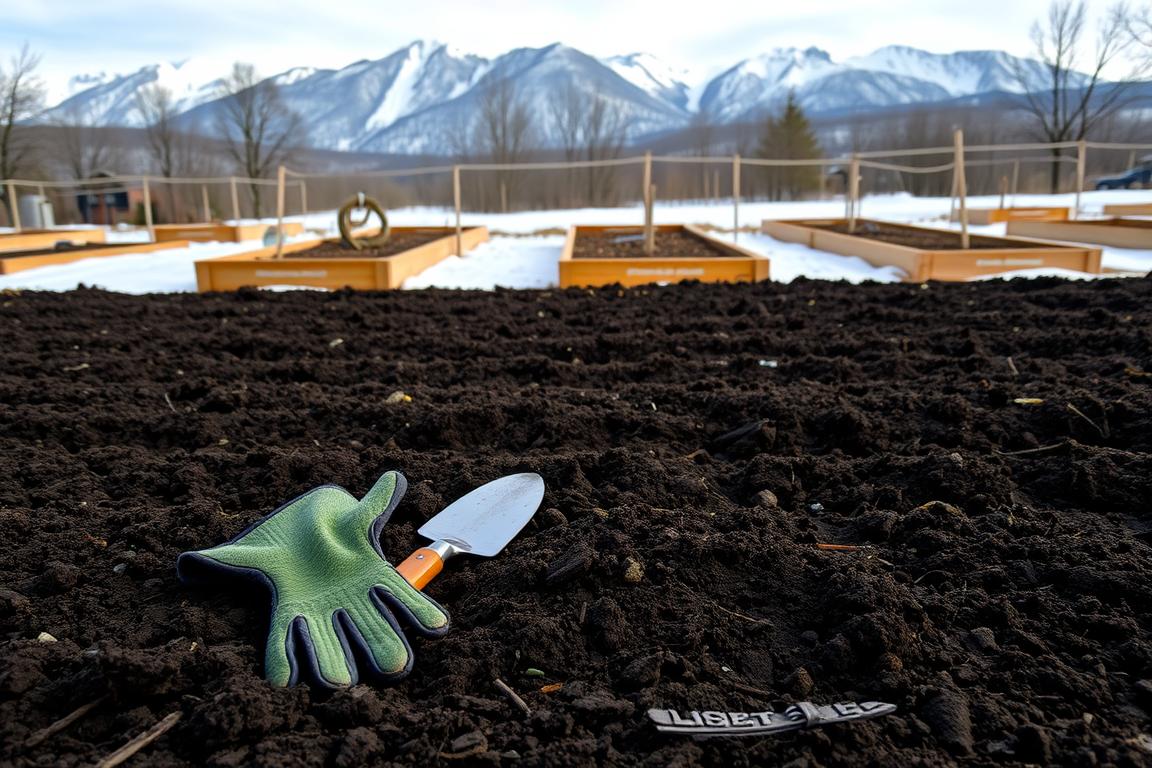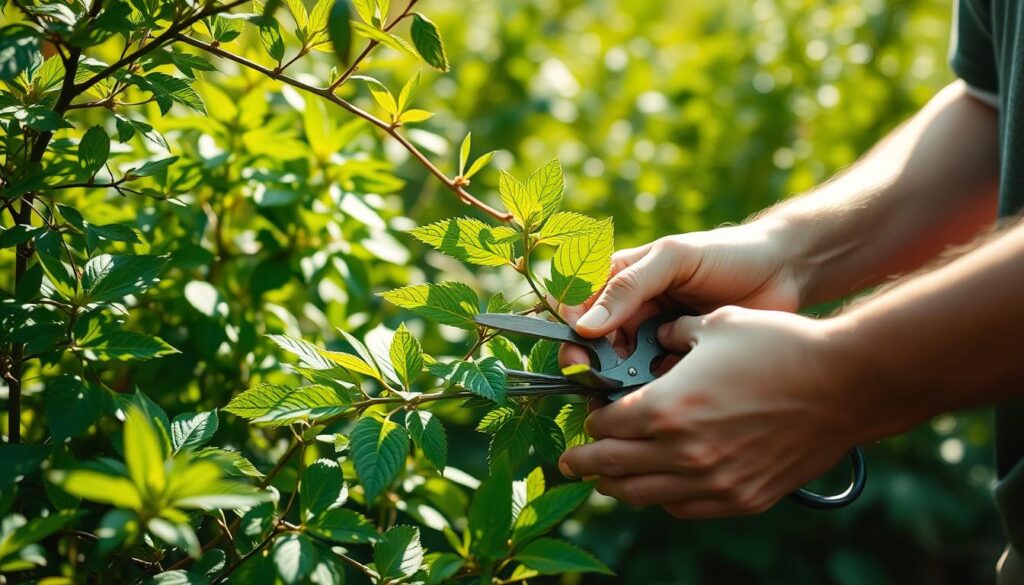
As the weather gets warmer, your plants need extra care to thrive. Spring pruning is key to keeping your garden healthy. It helps remove dead or damaged parts, stopping disease and encouraging new growth. This is part of taking care of your garden all year round.
Knowing the right spring pruning tips can greatly improve your plants’ health and look. For example, some hydrangeas need pruning before midsummer to keep their flowers. But newer types can be pruned anytime without losing blooms. By using the right techniques, you can keep your plants looking great all season.
Key Takeaways
- Spring pruning is essential for maintaining healthy and thriving plants.
- Removing dead, diseased, or damaged stems can prevent the spread of disease and encourage new growth.
- Using the right pruning techniques and plant care tips can promote healthy plant growth and improve the appearance of your plants.
- Seasonal plant care and garden maintenance are key to keeping your plants healthy and thriving all season.
- Pruning at the right time, such as immediately after blooming, can help prevent damage to your plants and promote new growth.
- Investing in professional landscaping services can yield a return on investment of up to 150% through enhanced property value and reduced maintenance costs.
- Proper pruning can enhance air circulation, reducing the risk of fungal diseases by up to 70% and promoting overall plant health.
Understanding the Importance of Spring Pruning
As winter fades, gardeners and homeowners focus on spring gardening tips and landscaping advice. They aim to revitalize their gardens. Pruning techniques are key to keeping plants healthy and looking good. By following plant care tips and garden maintenance, your garden will flourish all year.
Pruning techniques need the right timing. Spring pruning happens from January to March, based on your area and weather. It helps remove dead or damaged parts before new growth starts. This prevents disease and encourages healthy plant growth.
Some important areas to focus on during spring clean-up include:
- Checking homes, pools, playgrounds, and trampolines for safety
- Looking for dead or damaged plants and pruning them
- Using clean, sharp pruning tools to avoid damage and disease
By using these spring gardening tips and pruning techniques, your garden will be beautiful and thriving. It will show off your landscaping advice and plant care tips. Always remember to care for your plants seasonally to keep your garden a lovely space for years.
Essential Tools and Materials for Spring Pruning
When it comes to spring gardening tips, having the right tools is key. As plants start to grow, seasonal plant care is vital. You’ll need quality pruning tools like shears, loppers, and saws.
Tools like Corona extendable DualLINK bypass loppers are great for branches up to 2 inches. The Pullerbear works for stems from 0.75 to 3 inches wide. Professional gardeners love the Okatsune precision hedge shears for clean cuts.

Other must-haves include gardening gloves, a trowel or fork, and sharp hedge shears. Timing your pruning is also important, considering the weather and each plant’s needs. By following these spring gardening tips and using the right tools, your garden will thrive.
Expert Techniques for Spring Pruning
Spring pruning is key to keeping your plants healthy and strong. By using expert techniques, you can help your garden grow well. Regular pruning removes dead and damaged parts, which is important for your plants.
Choosing the right tools is essential for seasonal pruning. Bypass secateurs make cleaner cuts, reducing disease risk. Long-handled loppers and pruning saws are needed for thicker stems. These tools help keep your plants in top shape.

When pruning, cut at a 45° angle to prevent water from collecting. Cut above a bud, about 25% of the stem’s thickness, to avoid rot. Pruning towards outward-facing buds helps shoots grow better, increasing success by 25%.
Landscape maintenance and spring plant care also involve removing problem branches. This reduces bark wear by 30%, promoting healthier growth. By focusing on these techniques, your garden will flourish, bringing you joy and peace.
Common Spring Pruning Mistakes to Avoid
Many gardeners are excited to start spring plant care. But, some common mistakes can harm their plants’ health and growth. It’s key to know how to maintain plants properly, including flower bed upkeep and shrub trimming. A careful pruning approach is vital, but knowing what to avoid is just as important.
Timing is a critical factor in spring pruning. Pruning at the wrong time can cause plants to focus on leafy growth instead of flowers or fruit. For instance, prune spring-flowering shrubs right after they bloom. Prune summer-flowering shrubs in late winter or early spring. Knowing the right timing and techniques can help gardeners avoid mistakes.
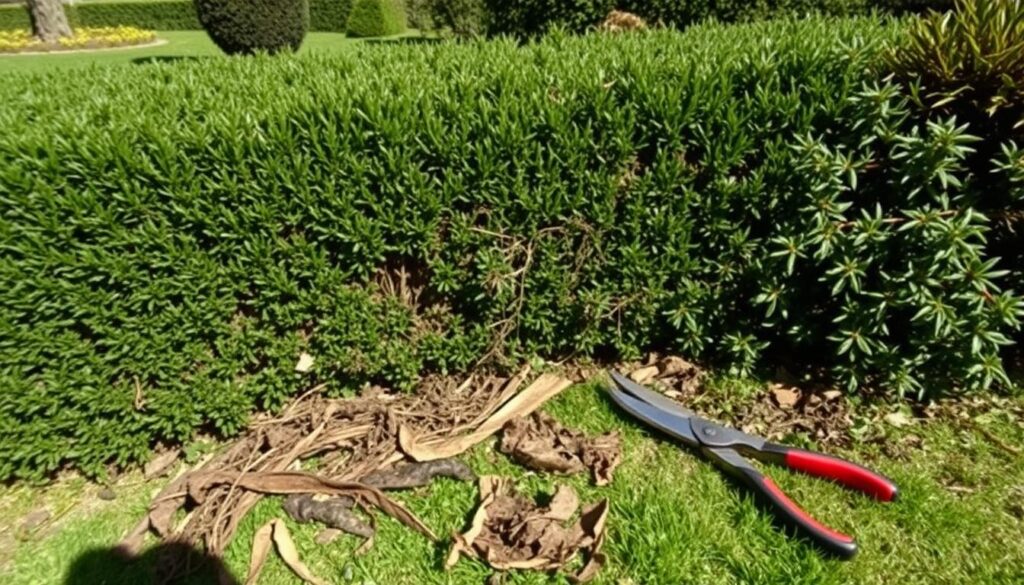
Common errors include over-pruning, which can harm the roots, and making improper cuts, leading to disease. It’s also important to respect how plants naturally grow. Avoid cutting too many inner branches, as this can make the plant look sparse and vulnerable to sun damage. By following these tips, gardeners can give their plants the best care, leading to a healthy garden.
- Avoid over-pruning, which can result in root dieback
- Use proper cut techniques to prevent disease and pest issues
- Respect the natural growth habit of the plant
- Avoid removing too many inner branches
By being aware of these mistakes and pruning thoughtfully, gardeners can help their plants thrive. Always follow the best pruning practices and care techniques for a beautiful, healthy garden all season.
Conclusion: Nurturing Your Garden Through Proper Pruning
Following expert plant pruning tips can greatly improve your plants’ health and look. Pruning removes dead, damaged, or overgrown parts. This improves airflow and lowers disease and pest risks. It also helps plants focus on growing more flowers, fruits, or leaves.
A seasonal pruning guide is key to knowing when to prune. For most plants, late winter or early spring is best. Pruning at this time promotes healthy growth and prevents damage.
For spring pruning success, use the right tools and make clean cuts. This avoids leaving stubs that pests and diseases can use. Keep in mind to observe and adapt pruning based on plant response. Also, disinfect pruning tools to prevent disease spread.

For more pruning and garden care tips, talk to a gardening expert or look online. With the right knowledge, you can have a beautiful, thriving garden. Prioritize plant health and follow expert advice for a lush garden all season.
| Pruning Tool | Use |
|---|---|
| Pruning Shears | Cutting stems and branches up to 1/2 inch in diameter |
| Lopping Shears | Cutting larger branches up to 2 inches in diameter |
| Pruning Saw | Cutting through thicker branches |
Additional Tips for Spring Pruning
As we wrap up our spring pruning talk, remember that pruning at the right time is key. For example, summer-blooming shrubs like abelia and butterfly bush should be pruned from mid-March to early April. This helps avoid delaying their blooms or cutting off that year’s flowers.
Good garden care includes using the right pruning techniques. Deadheading spent blooms encourages new growth in flowering plants. Prune spring bloomers right after they flower to promote growth for next year’s blooms.
By following these tips, you can have a stunning garden. Prune no more than 1/3 of the branches that produce new growth in winter. Use the right tools, like pruning shears and lopping shears, for clean cuts. With these tips, you’ll become a pruning pro.
FAQ
What is the best time to prune my plants in the spring?
Prune your plants in the spring before new growth starts. This lets you remove dead or damaged stems. It also stops disease from spreading. Regular pruning encourages healthy growth and keeps your plants looking good.
Why is spring pruning important for my garden?
Spring pruning is key because it removes dead or damaged stems. This stops disease and encourages new growth. It also keeps your plants healthy and looking their best.
What tools and materials do I need for spring pruning?
You’ll need pruning shears, loppers, and saws for spring pruning. Using these tools safely is important to avoid harming your plants.
How do I make clean cuts when pruning my plants?
For clean cuts, use sharp tools and cut at a 45-degree angle. This helps your plants heal well and prevents disease. Proper pruning is key for healthy plants.
What are some common mistakes to avoid when pruning in the spring?
Avoid over-pruning and making timing errors. Also, don’t cut your plants the wrong way. These mistakes can hurt your plants and stop them from growing well. Careful planning and execution are important for garden maintenance.
How often should I prune my plants to maintain their health?
Prune frequency depends on your plant’s type and growth rate. But, regular pruning is vital for your plants’ health and shape. Seasonal pruning and care are essential for healthy growth and disease prevention.
What are the benefits of pruning for my plants?
Pruning promotes healthy growth, prevents disease, and keeps your plants looking good. It maximizes plant health and growth. Following gardening tips can help you have a thriving garden.
How can I maintain a healthy and thriving landscape throughout the growing season?
To keep your landscape healthy, prune regularly, water right, and fertilize. Garden care and maintenance need attention and a commitment to your plants’ needs. Spring gardening tips and seasonal care can help you have a beautiful garden.
What are some additional tips for spring pruning?
For more spring pruning tips, consider best practices and techniques. Think about the benefits of pruning and how to keep your landscape thriving. Green thumb tips and organic gardening advice can help you grow a sustainable garden.


